Uncharted waters: How pension plans can better equip themselves for a period of economic upheaval
We find ourselves in unprecedented times. As the COVID-19 pandemic spreads globally, markets are at their lowest levels in decades and uncertainty has taken hold.
Few are confident in forecasting more than a few days or weeks ahead given the pace with which the situation has changed. The unpredictability of when a recovery might come and what form it will take: navigating between the proverbial rock and the hard place, trying not to give away too much upside, while avoiding too much downside; being prepared for both higher rates and lower rates as well as higher asset or lower asset returns.
A decade of change
Of course, the industry has faced periods of uncertainty before, albeit not often on this scale. If assets and liabilities and funded status were completely predictable, then risk would be all but eliminated. But this time, that uncertainty is compounded by the long shadow of the financial crisis of a decade ago, which cruelly exposed insufficient levels of preparedness in so many offices across the entire financial services sector.
Pension plans that were badly hit then, and went rapidly from being 100 percent funded to, say, 70 percent funded reasoned that there was little point in deploying an asset, liability and risk management solution.
It is one of the reasons that North American pension plans often still rely on technological solutions that have not progressed in significant ways in the past ten years – despite the transformation that technology itself has undergone over the past decade.
Those with internal resource often have a group of solutions or internal spreadsheets to model outcomes based on data drawn from a multitude of sources. Taking an aggregated, consolidated view from multiple solutions that have been roped together over time is asking them to perform in ways that were never intended.
These solutions are a vast improvement on the manual and semi-manual processes that preceded them. But they don’t necessarily provide the universally available, always-on insight that can now be achieved with the combination of joined-up analytics and web-based platforms.
Insight for all
The flaws in extant solutions have been manageable to date, but they aren’t delivering optimal results and are falling short of what can be achieved. They cannot, for example, provide consolidated, consistent, plan-specific and cross-balance sheet information for multiple jurisdictions in one place because they were never designed to. They start to creak when asked to populate liability analytics with member-level data or plan cashflows, or to model asset data at security level, or map that data to standard or custom benchmarks.
Nor are they designed to be a single place for all stakeholders to interact with data or support meaningful and interactive relationships between trustees, sponsors, actuaries, consultants, investment managers, or insurers.
All these things are now possible. More than that, this enhanced capability improves insight, control and even governance functions which, in turn, enable a business to react and respond appropriately to changing market circumstances.
Even where risk management is outsourced to highly qualified fiduciaries, these challenges remain. External advisors may have full discretion to trade out of one asset and into another as markets shift, but trustees still need to feel comfortable about the decisions that are made. That relies on up-to-date reporting; and the more joints there are in the system, the more manual interventions required, the greater the likelihood that reporting – and with it insight – will be delayed.
The moment to act
Pension plans can do more than simply batten down the hatches and wait for the tornado to pass. Looking again at risk management solutions and more advanced technological capability can open the door to more informed decision-making, improved performance, and greater efficiencies. Certainly, governance and control can be enhanced, and with them, insight.
But being prepared for what happens next, whatever it may be, also means being prepared to capitalize on opportunities as they arise. By monitoring the plan on a daily basis, and setting smart, swift triggers, you can balance and re-balance fixed income and equities to better match long-term goals and liabilities.
Pension plan managers and their fiduciaries don’t need to be told how to manage risk and liability, or how to manage assets to deliver their investors’ goals. But they should be prepared to do those things in a future that is far from certain. Being equipped with better tools is one way to achieve that. It’s time to look at technology again.




